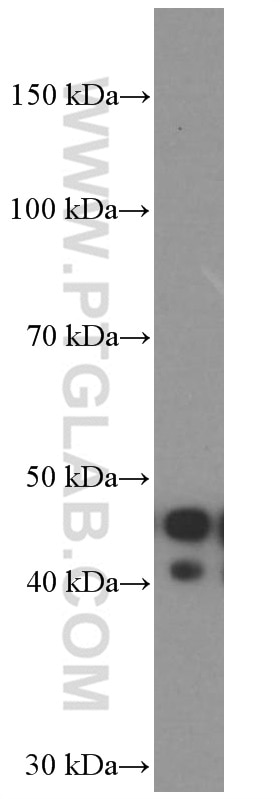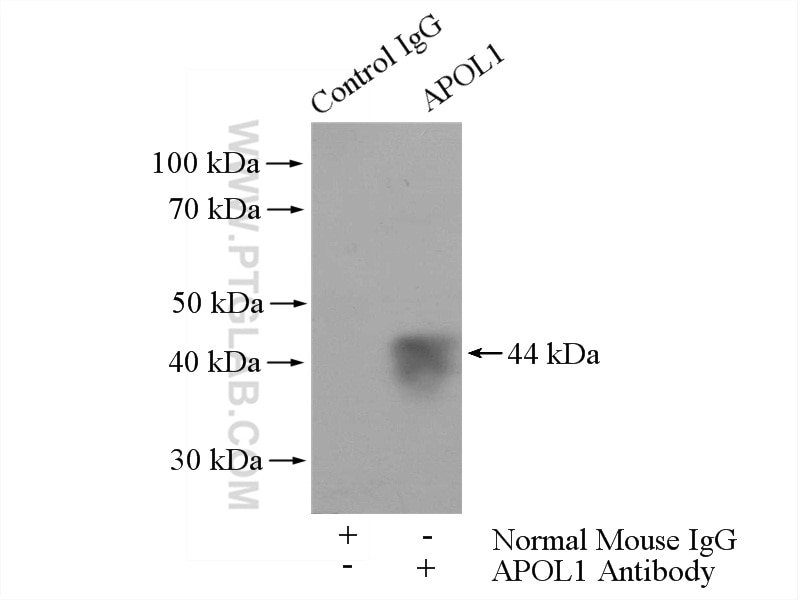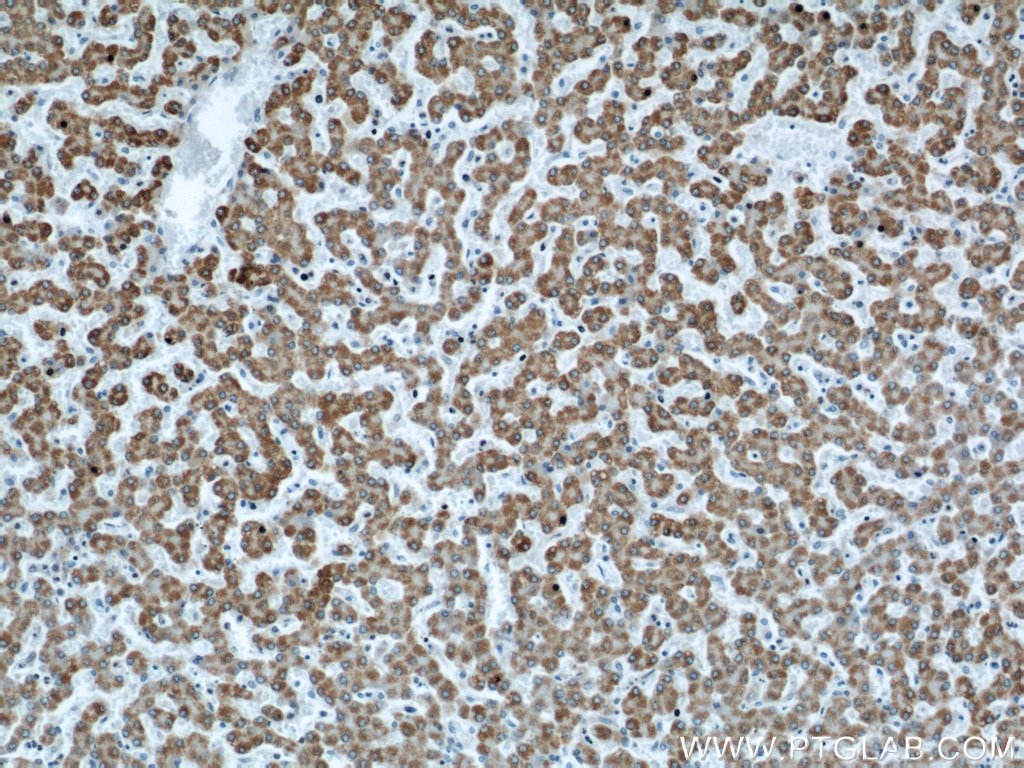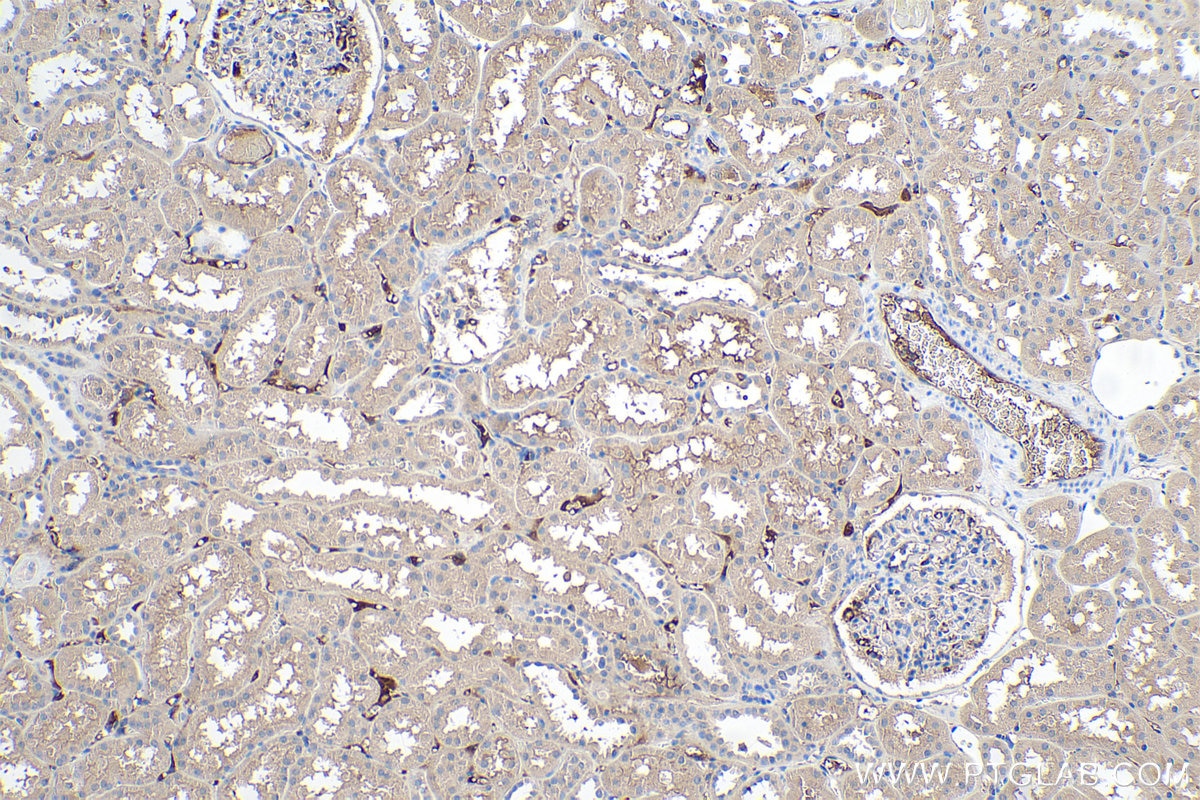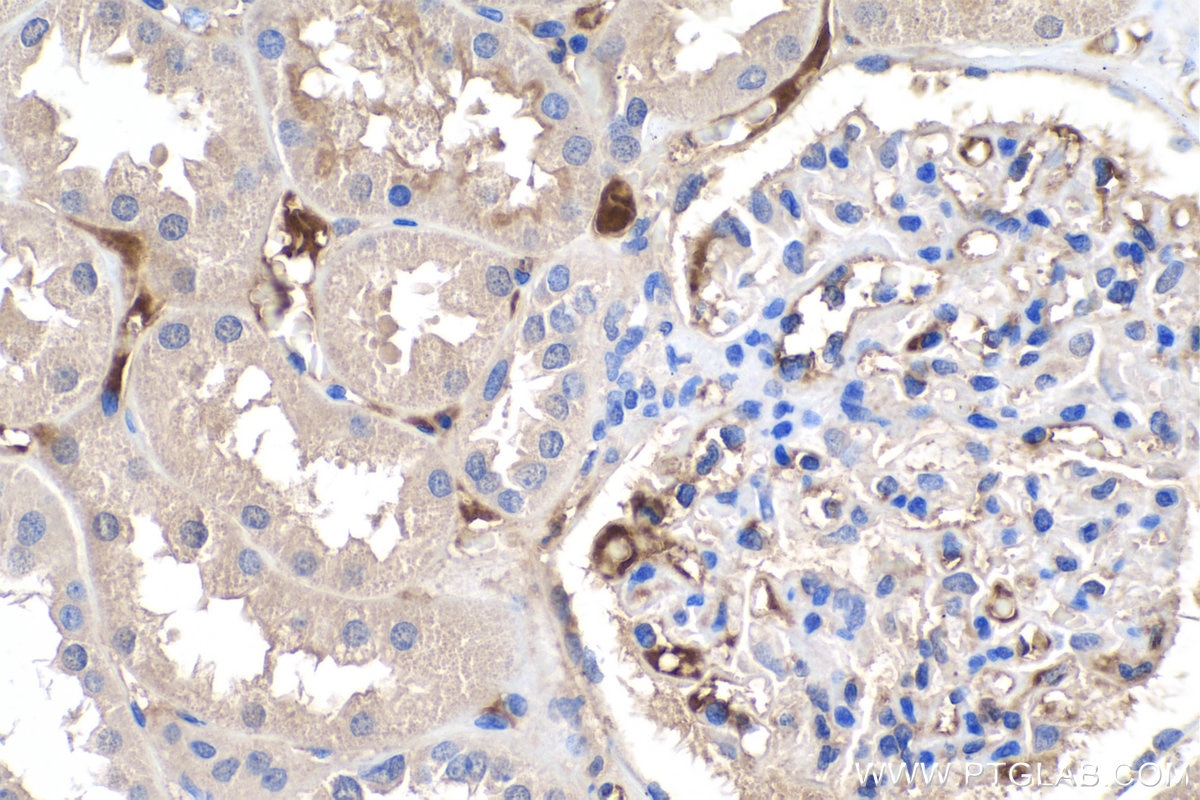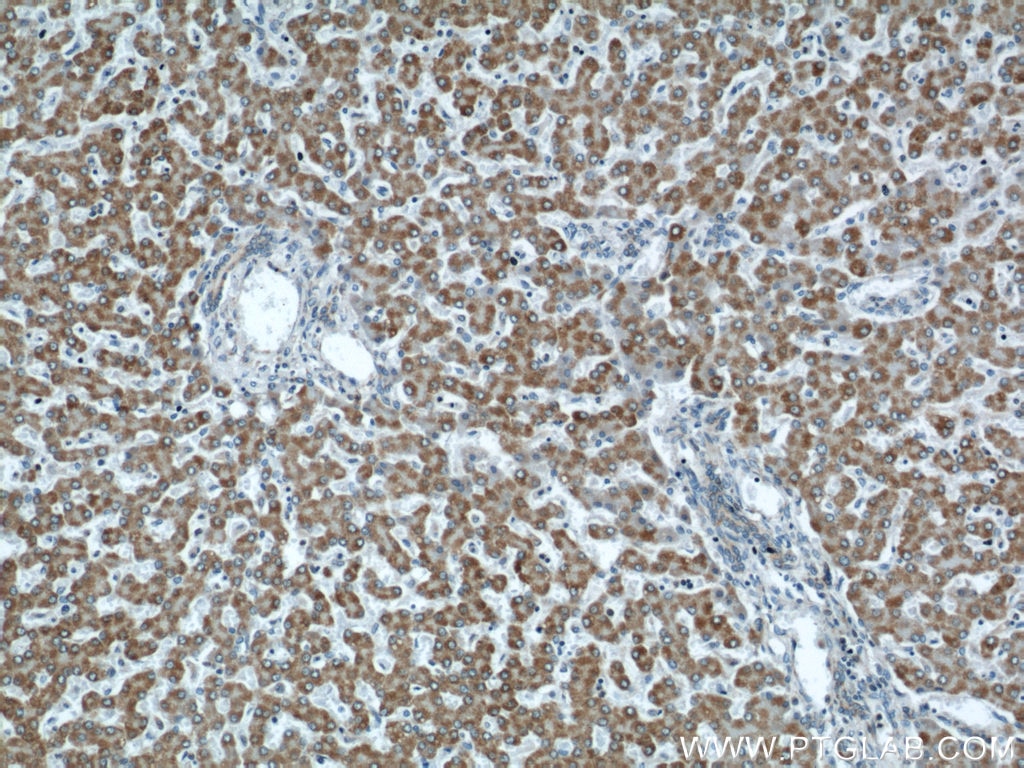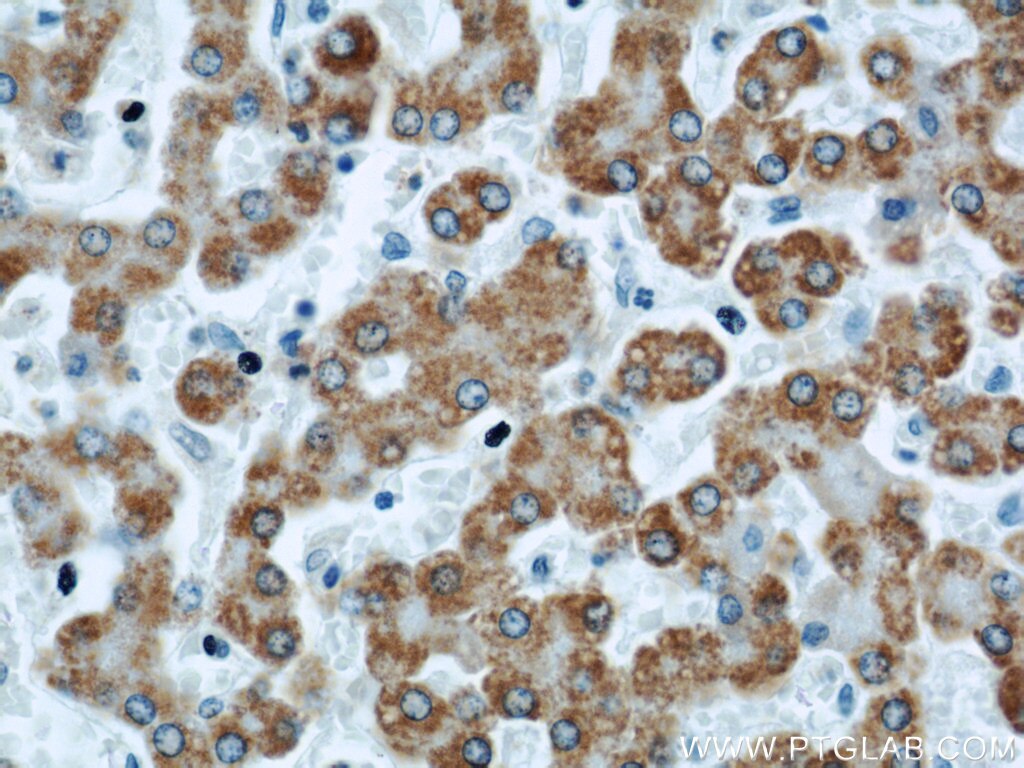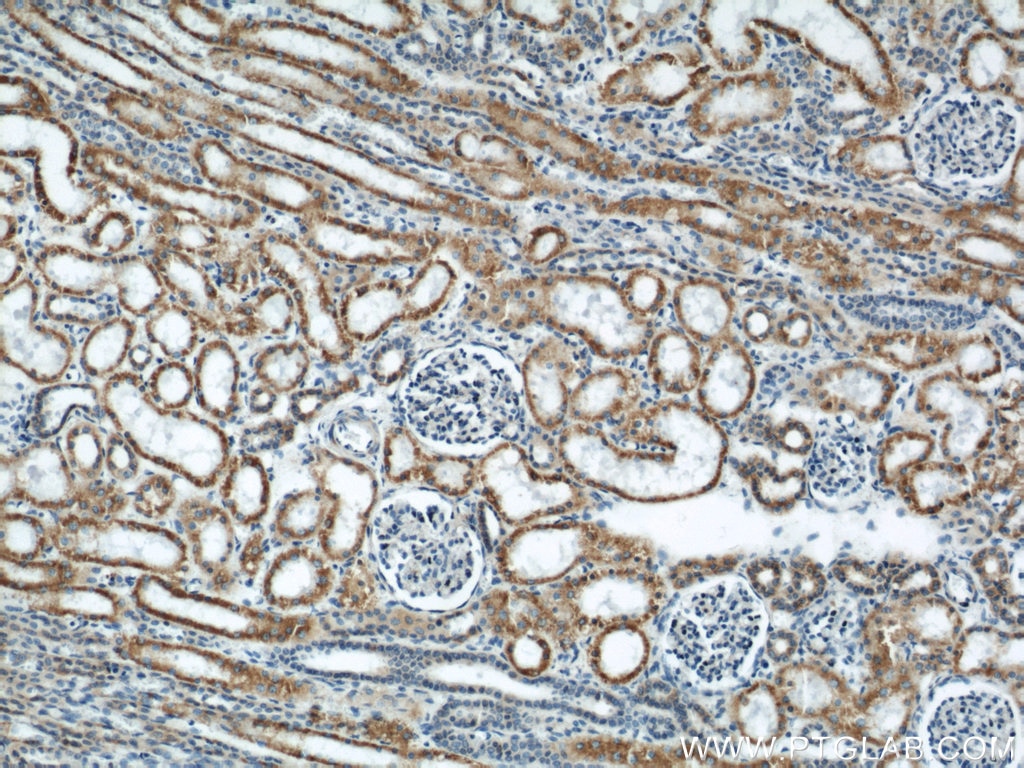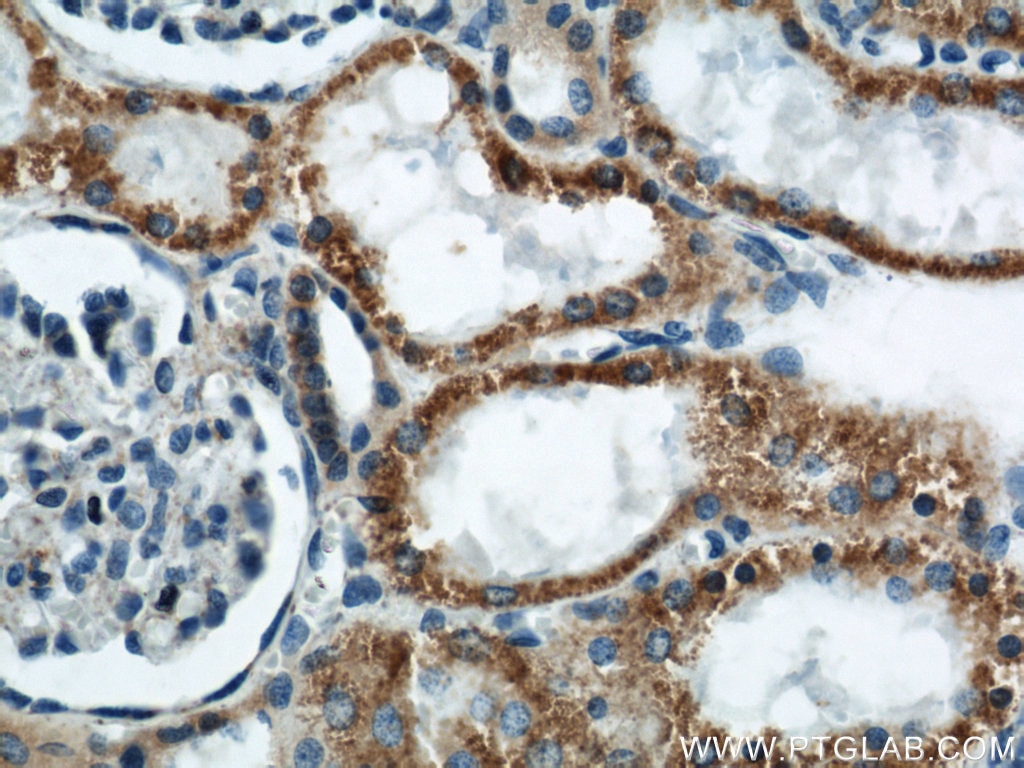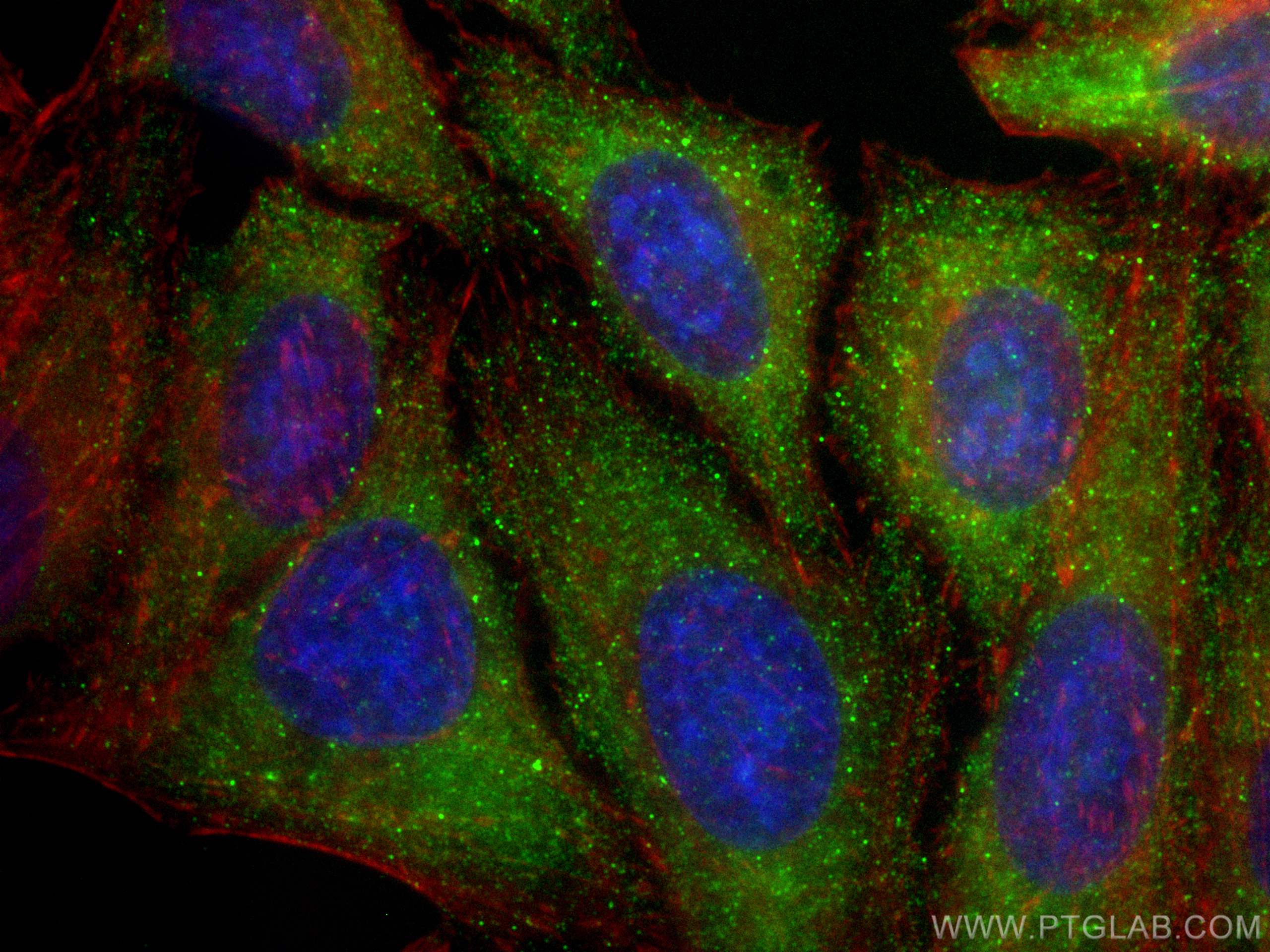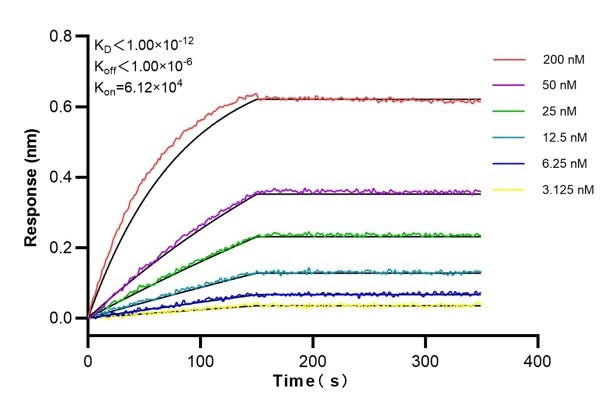Validation Data Gallery
Tested Applications
| Positive WB detected in | human plasma tissue |
| Positive IP detected in | human plasma tissue |
| Positive IHC detected in | human liver tissue, human kidney tissue Note: suggested antigen retrieval with TE buffer pH 9.0; (*) Alternatively, antigen retrieval may be performed with citrate buffer pH 6.0 |
| Positive IF/ICC detected in | HepG2 cells |
Recommended dilution
| Application | Dilution |
|---|---|
| Western Blot (WB) | WB : 1:20000-1:100000 |
| Immunoprecipitation (IP) | IP : 0.5-4.0 ug for 1.0-3.0 mg of total protein lysate |
| Immunohistochemistry (IHC) | IHC : 1:500-1:5000 |
| Immunofluorescence (IF)/ICC | IF/ICC : 1:200-1:800 |
| It is recommended that this reagent should be titrated in each testing system to obtain optimal results. | |
| Sample-dependent, Check data in validation data gallery. | |
Published Applications
| KD/KO | See 2 publications below |
| WB | See 16 publications below |
| IHC | See 2 publications below |
| IF | See 8 publications below |
| IP | See 1 publications below |
Product Information
66124-1-Ig targets APOL1-Specific in WB, IHC, IF/ICC, IP, ELISA applications and shows reactivity with human samples.
| Tested Reactivity | human |
| Cited Reactivity | human |
| Host / Isotype | Mouse / IgG2a |
| Class | Monoclonal |
| Type | Antibody |
| Immunogen | APOL1-Specific fusion protein Ag2016 相同性解析による交差性が予測される生物種 |
| Full Name | apolipoprotein L, 1 |
| Calculated molecular weight | 44 kDa |
| Observed molecular weight | 39-45 kDa |
| GenBank accession number | BC017331 |
| Gene Symbol | APOL1 |
| Gene ID (NCBI) | 8542 |
| RRID | AB_2881523 |
| Conjugate | Unconjugated |
| Form | Liquid |
| Purification Method | Protein A purification |
| UNIPROT ID | O14791 |
| Storage Buffer | PBS with 0.02% sodium azide and 50% glycerol{{ptg:BufferTemp}}7.3 |
| Storage Conditions | Store at -20°C. Stable for one year after shipment. Aliquoting is unnecessary for -20oC storage. |
Background Information
Human apolipo-protein L1 (APOL1) is a minor component of plasma high density lipoprotein (HDL) particles, acting as an interacting protein of apolipoprotein A1 (ApoA1). The human ApoL protein family was thought to be predominantly involved in lipid transport and metabolism. APOL1 is also involved in host innate immunity against Trypanosoma parasites. Once activated, APOL1 can lyse the parasite and protect human from infection. Genetic variants in APOL1 gene, which are found in African ancestry with high frequency, associate with chronic kidney disease, like focal segmental glomerulosclerosis (FSGS), HIV-associated nephropathy (HIVAN), and hypertensive nephropathy. APOL1 share structural and functional similarities with proteins of the Bcl-2 family and may has roles in apoptosis and autophagy. It is notable that APOL1 exists only in human and a few other primate species, and mouse does not express an APOL1 orthologue. This antibody recognizes the endogenous ApoL1 of 39-45 kDa in blood lysate. This antibody is specific to APOL1.
Protocols
| Product Specific Protocols | |
|---|---|
| WB protocol for APOL1-Specific antibody 66124-1-Ig | Download protocol |
| IHC protocol for APOL1-Specific antibody 66124-1-Ig | Download protocol |
| IF protocol for APOL1-Specific antibody 66124-1-Ig | Download protocol |
| IP protocol for APOL1-Specific antibody 66124-1-Ig | Download protocol |
| Standard Protocols | |
|---|---|
| Click here to view our Standard Protocols |
Publications
| Species | Application | Title |
|---|---|---|
Immunity APOL1 risk variants in individuals of African genetic ancestry drive endothelial cell defects that exacerbate sepsis. | ||
J Am Soc Nephrol Kidney Disease-Associated APOL1 Variants Have Dose-Dependent, Dominant Toxic Gain-of-Function. | ||
Mol Ther Antisense oligonucleotides ameliorate kidney dysfunction in podocyte-specific APOL1 risk variant mice. | ||
Elife Apolipoprotein L-1 renal risk variants form active channels at the plasma membrane driving cytotoxicity. | ||
